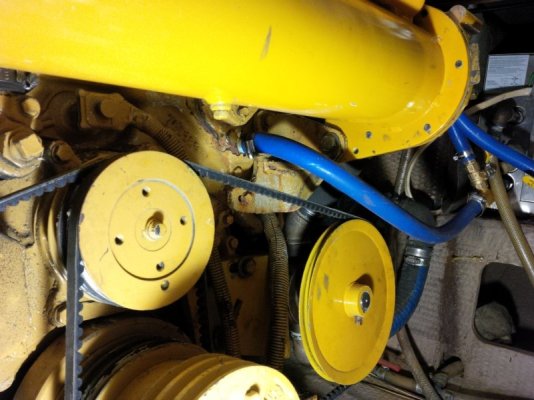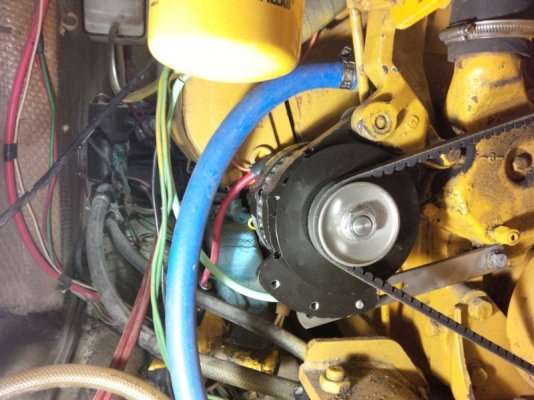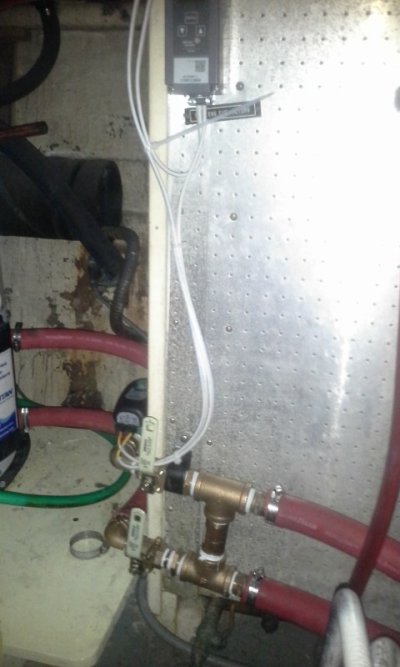On The Rocks
Senior Member
mine has heat exchangers for the hydronic heating system that the engines and hot water heater are connected to. The engines are pre-heated by the hydronic heater and they provide heat to the hydronic system when running.
I need to replace the heater hoses that run from the heat exchanger to the hot water heater. My question is should I sue silicone or rubber hose?
I need to replace the heater hoses that run from the heat exchanger to the hot water heater. My question is should I sue silicone or rubber hose?



 We run on the bridge 99% of the time. In the fall and early winter when temps drop to the 30s and 40s it would be nice to have heat on the bridge. My hot water heater is 180F with the engine running. Has any one put a secondary pump off the hot water heater domestic water side to supply a HX on the bridge?
We run on the bridge 99% of the time. In the fall and early winter when temps drop to the 30s and 40s it would be nice to have heat on the bridge. My hot water heater is 180F with the engine running. Has any one put a secondary pump off the hot water heater domestic water side to supply a HX on the bridge?

